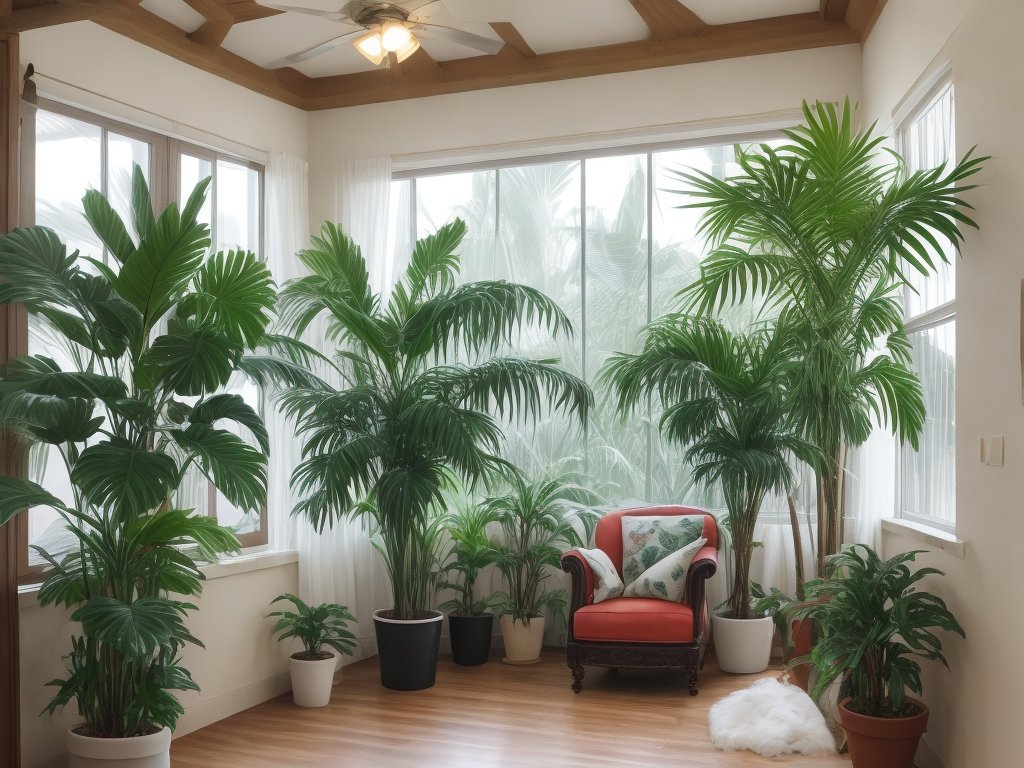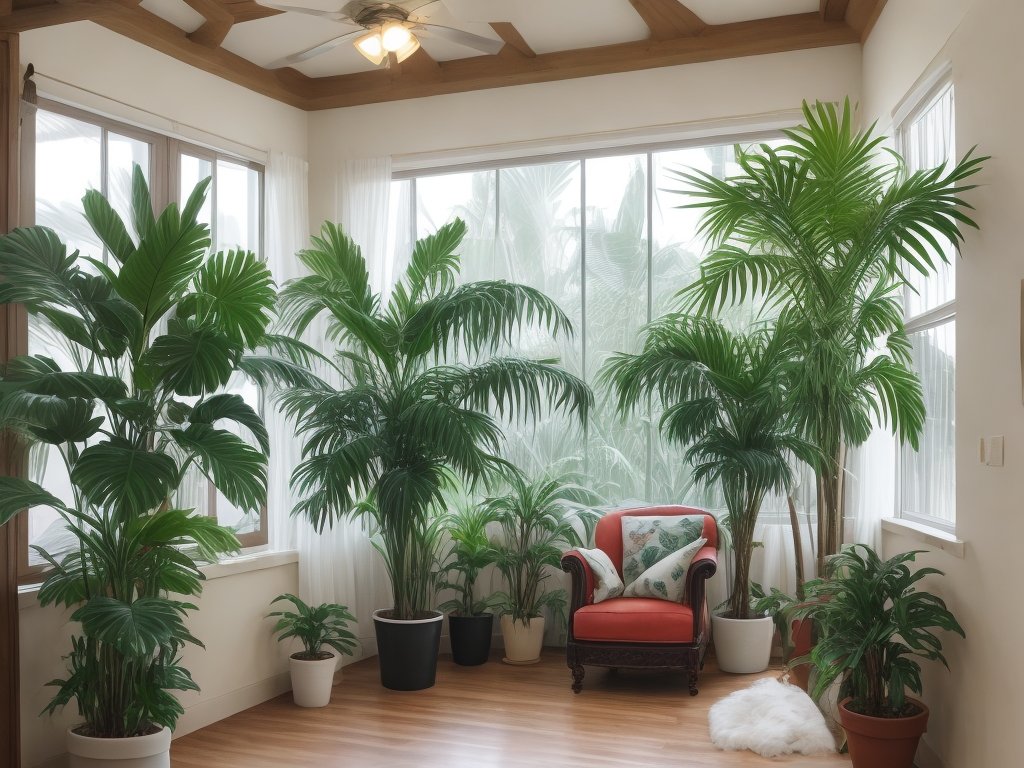Parlor Palm Soil Requirements: Thrive with the Best Soil!
Key Takeaways:
- Parlor palms prefer well-draining soil to avoid root rot.
- A mix of peat moss, sand, and perlite is ideal for parlor palm soil.
- Avoid overwatering as it can lead to soil saturation and harm the plant.
- Regularly check the soil moisture level to determine when to water your parlor palm.
Do you want to keep your Parlor Palm thriving and gorgeous?
Well, it all starts with the right soil.
In this article, I’ll guide you through the essential soil requirements for your Parlor Palm, and trust me, it’s much more than just dirt.
We’ll cover everything from the ideal soil composition and pH levels to container selection and soil maintenance.
I’ll even share some nifty tips on crafting your own soil mix.
So stay tuned as we dig into the world of Parlor Palm soil requirements and unleash the secrets to a happy, healthy plant.
| Soil Type | Requirements |
| Sandy Soil | Not suitable as it doesn’t retain enough moisture |
| Loamy Soil | Preferred soil type for parlor palms; well-draining and retains moisture |
| Clay Soil | Not suitable as it retains too much moisture and can lead to root rot |
| Peaty Soil | Potentially suitable as long as it is well-draining; can aid in moisture retention |
| Acidic Soil | Parlor palms thrive in slightly acidic to neutral soil (pH 6 to 7) |
| Fertile Soil | Not necessary, but adding organic matter can improve overall plant health |
Understanding Parlor Palm Soil Requirements
Understanding Parlor Palm Soil Requirements is essential for ensuring the health and growth of your plant.
Ideal Soil Composition for Parlor Palm
The ideal soil composition for Parlor Palm should be well-draining and slightly acidic, with a pH level between 6 and 7.
A mixture of peat moss, perlite, and sand works well.
It’s important to avoid heavy clay or compacted soil, as it can lead to root rot.
Adding organic matter and amendments helps improve the soil’s fertility and moisture retention.
Soil testing can also help identify any adjustments needed for your Parlor Palm’s specific needs.
Significance of Well-Draining Soil for Parlor Palm
Well-draining soil is crucial for the health and growth of Parlor Palms.
It helps prevent overwatering and root rot by allowing excess water to flow out of the pot.
Well-draining soil also ensures proper aeration and allows the roots to access oxygen, preventing suffocation.
This promotes healthy root development and overall plant vitality.

pH Level Considerations for Parlor Palm Soil
The pH level of the soil is an important consideration for Parlor Palm. It prefers slightly acidic to neutral soil, with a pH range of 6.0 to 7.0. Avoid soil that is too alkaline, as it can affect nutrient availability.
Regularly test the pH level and make adjustments if needed to ensure optimal growth for your Parlor Palm.
Selecting the Right Container for Parlor Palm
Choose a container with drainage holes to prevent waterlogging.
Opt for a pot slightly larger than the plant’s root ball, allowing room for growth.
Consider materials like clay or ceramic for their durability and breathability.
Pick a style that complements your decor and suits your personal preference.

Best Soil Mixes for Parlor Palm
For the best soil mixes for your Parlor Palm, consider using commercial potting mixes or try out homemade soil mixes with added amendments and organic matter.
Commercial Potting Mixes for Parlor Palm
Commercial potting mixes specially formulated for Parlor Palms are readily available in garden centers and nurseries. These mixes are designed to meet the specific soil requirements of Parlor Palms, providing optimal drainage and moisture retention.
Look for potting mixes labeled for indoor plants or tropical plants, which typically contain a blend of peat moss, perlite, and vermiculite.
These mixes create a well-draining environment while retaining necessary moisture for the Parlor Palm’s root system. Additionally, these commercial mixes often contain added nutrients and organic matter to support healthy growth.
Make sure to follow the manufacturer’s instructions for proper usage and application.

Homemade Soil Mix Options for Parlor Palm
There are several homemade soil mix options for Parlor Palm. One option is to mix equal parts of peat moss, perlite, and sand.
Another option is to combine potting soil with coco coir and vermiculite.
Adding organic matter like compost or well-rotted manure can also improve the soil quality. Just make sure the soil is well-draining and has a slightly acidic pH level.
Experiment with different mixtures to find what works best for your Parlor Palm.
Adding Amendments and Organic Matter to Parlor Palm Soil
Adding amendments and organic matter to Parlor Palm soil is a great way to improve its quality and provide essential nutrients to the plant.
You can add compost, well-rotted manure, or leaf mold to enrich the soil.
Additionally, incorporating perlite or vermiculite can improve drainage.
Just make sure not to overdo it, as too much organic matter can lead to waterlogging and root rot.

Soil Testing and Adjustments for Parlor Palm
Soil testing is important for Parlor Palms to ensure optimal growth. Test the soil’s pH level using a soil testing kit.
Adjust the pH with amendments like sulfur or limestone.
Also, check the soil’s moisture retention by conducting a simple squeeze test. Adjust watering frequency and drainage accordingly.
Caring for Parlor Palm Soil
To care for Parlor Palm soil, you need to focus on watering techniques, fertilizing tips, mulching and top dressing, as well as soil maintenance and renewal.
Watering Techniques for Parlor Palm
Water your Parlor Palm thoroughly whenever the soil feels slightly dry about an inch deep. Avoid overwatering, as it can lead to root rot.
Ensure that the pot has drainage holes, and allow excess water to drain.
Use room temperature water and avoid waterlogging the soil.
Fertilizing Tips for Parlor Palm
Fertilizing Parlor Palms is essential for their growth and health.
Use a balanced liquid fertilizer during the growing season.
Dilute the fertilizer to half or quarter strength to avoid overfeeding.
Apply fertilizer every 2-4 weeks.
Ensure the soil is moist before fertilizing.
Avoid fertilizing during the winter months as the plant is dormant.
Monitor the palm for signs of nutrient deficiencies or excesses and adjust the feeding accordingly.
Mulching and Top Dressing the Parlor Palm Soil
Mulching and top dressing are beneficial for Parlor Palm soil.
Mulching helps retain moisture and regulate temperature, while top dressing adds nutrients and improves soil structure.
Use organic materials like compost, peat moss, or bark chips.
Apply a layer around 1-2 inches thick, avoiding direct contact with the plant stem.
Remove old mulch before applying a fresh layer.
Top dress with slow-release fertilizer to provide ongoing nutrition.
Soil Maintenance and Renewal for Parlor Palm
To maintain and renew the soil for your Parlor Palm, follow these steps:
- Regularly check the moisture level of the soil and water the plant only when the top inch feels dry. Overwatering can lead to root rot.
- Fertilize the plant every two to three months during the growing season with a balanced houseplant fertilizer.
- Mulch the top layer of soil to help retain moisture and provide additional nutrients.
- If the soil becomes compacted, gently loosen it with a fork or by repotting the plant in fresh soil.
- Every 2-3 years, consider repotting your Parlor Palm in fresh, well-draining soil to promote healthy growth.
Troubleshooting Parlor Palm Soil Issues
Are you facing problems with your parlor palm soil?
Let’s troubleshoot and fix it together!
Dealing with Overwatering and Poor Drainage
Overwatering and poor drainage can harm your parlor palm.
To deal with this issue, make sure you don’t water too frequently and allow the soil to dry out before watering again.
Improve drainage by using well-draining soil and adding perlite or sand.
Ensure there are drainage holes in the pot and avoid using saucers that collect excess water.
If the soil is already waterlogged, let it dry out completely and consider repotting if necessary.
Addressing Soil pH Imbalances in Parlor Palm
To address soil pH imbalances in your Parlor Palm, you can take a few simple steps. First, test the pH of your soil using a testing kit available at garden centers.
If the pH is too high (alkaline), you can lower it by adding organic matter like peat moss or compost.
Conversely, if the pH is too low (acidic), you can raise it by adding lime or wood ash. Regularly monitoring and adjusting the pH will help ensure a healthy growing environment for your Parlor Palm.
Combating Soil Compaction and Nutrient Deficiencies
Combating soil compaction and nutrient deficiencies is essential for the health of your parlor palm.
To combat soil compaction, loosen the soil regularly by gently turning it with a fork.
Adding organic matter like compost or peat moss can improve soil structure.
To address nutrient deficiencies, use a balanced fertilizer specifically formulated for indoor plants.
Regularly monitor your plant for signs of nutrient deficiency and adjust fertilizer application accordingly.
Preventing Pests and Diseases through Proper Soil Management
Preventing pests and diseases in your parlor palm begins with proper soil management. Here are a few key tips:
- Use well-draining soil: This helps prevent waterlogging, which can attract pests and lead to root rot.
- Maintain the appropriate pH levels: Parlor palms prefer slightly acidic soil, so aim for a pH between 6 and 7.
- Choose the right container: Use a pot with drainage holes to ensure excess water doesn’t accumulate in the soil.
- Consider commercial potting mixes: These blends are specifically formulated for indoor plants and often contain disease-resistant additives.
- Add organic matter: Incorporate compost or peat moss into your soil mix to improve its structure and provide essential nutrients.
- Test and adjust: Regularly check the pH and nutrient levels in the soil and make any necessary adjustments to keep your plant healthy.
- Practice proper watering: Avoid overwatering, as this can create a favorable environment for pests and diseases. Allow the soil to dry out slightly between waterings.
- Mulch and top dress: Adding a layer of organic mulch or top dressing can suppress weed growth, retain moisture, and improve overall soil health.
Frequently Asked Questions about Parlor Palm Soil Requirements
Can I use garden soil for my Parlor Palm?
No, using garden soil for your Parlor Palm is not recommended.
Garden soil may not provide the ideal drainage and pH level required for this plant.
It’s best to use well-draining and pH-balanced soil mixes specifically designed for indoor plants like the Parlor Palm.
How often should I water my indoor Parlor Palm?
Water your indoor Parlor Palm when the top inch of the soil feels dry. Check the moisture level by inserting your finger into the soil.
Avoid overwatering, as Parlor Palms are sensitive to soggy conditions.
It’s better to underwater slightly than to overwater.
What can I do if my Parlor Palm soil becomes compacted?
If your Parlor Palm soil becomes compacted, you can take a few simple steps to address the issue.
Firstly, gently loosen the soil using a small gardening fork or your fingers.
Avoid excessive force to prevent damaging the plant’s roots.
Secondly, consider adding organic matter such as peat moss or compost to improve the soil structure.
Lastly, make sure to water the plant adequately, but avoid overwatering as it can lead to further compaction.
How do I know if my Parlor Palm soil needs fertilizing?
To determine if your Parlor Palm soil needs fertilizing, observe the plant’s overall health and growth rate. If the leaves are pale, smaller than usual, or if the plant is growing slowly, it may be a sign of nutrient deficiency.
Conduct a soil test to assess nutrient levels and adjust accordingly.
Are there any natural remedies for controlling soil-borne pests?
Yes, there are several natural remedies you can try to control soil-borne pests. Here are a few options:
- Neem oil: Mix with water and apply to the soil to repel pests.
- Diatomaceous earth: Sprinkle on the soil surface to deter pests.
- Companion planting: Plant pest-repellent herbs and flowers near your Parlor Palm.
- Beneficial insects: Introduce predator insects like ladybugs or nematodes to combat pests.
- Homemade solutions: Garlic or chili pepper sprays can be effective against certain pests.
Remember, prevention is key! Regularly inspect your plant for signs of pests, keep the soil healthy, and maintain good hygiene practices to minimize the chances of infestations.
Final Verdict
Understanding the soil requirements of your Parlor Palm is crucial for its overall health and well-being.
The ideal soil composition should be well-draining and have a slightly acidic pH level.
Selecting the right container and using the best soil mixes, whether commercial or homemade, is essential.
Regular watering, fertilizing, and mulching can help maintain the soil’s moisture and nutrient levels.
In case of soil issues, such as overwatering or nutrient deficiencies, prompt action should be taken.
Parlor Palm thrives in its environment ensure that your Parlor Palm thrives in its environment and remains a beautiful addition to your indoor space.







